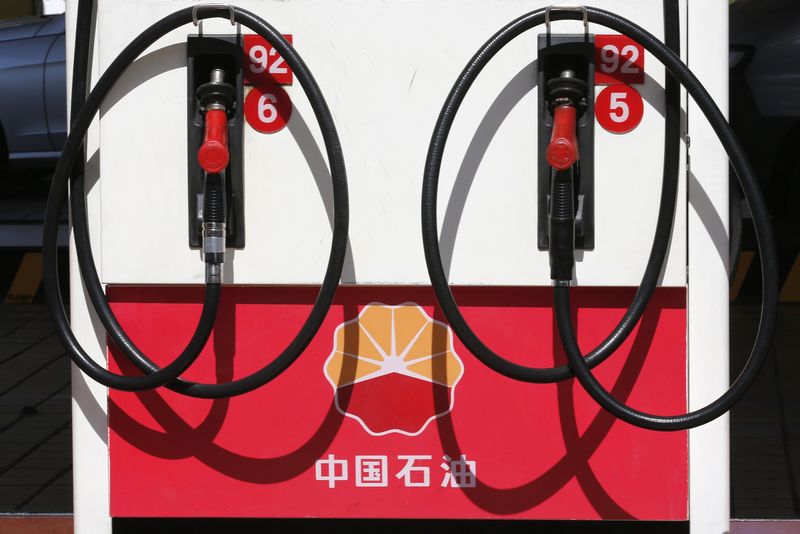Investing.com -- Oil prices retreated in Asian trade on Tuesday as investors weighed another interest rate cut in China against increasing pessimism over its economic prospects this year, while caution over U.S. monetary policy also persisted.
Brent oil futures fell 0.3% to $75.86 a barrel, while West Texas Intermediate crude futures fell 0.6% to $71.08 a barrel by 22:28 ET (02:28 GMT).
Both contracts retreated on Monday after concerns over China largely offset signs of tighter supply from Saudi Arabian production cuts and dropping U.S. oil rig numbers.
Chinese economic concerns weigh on oil
Growing concerns over a Chinese economic recovery weighed on oil prices this week, with the latest cut in the country’s benchmark loan prime rate (LPR) coming after a slew of major investment banks, most recently Goldman Sachs (NYSE:GS), cut their outlook for the Chinese economy this year.
China’s LPR cut on Tuesday was largely anticipated by markets, given that the country had trimmed short and medium-term lending rates last week, following several disappointing economic indicators for April and May.
While the country has been importing and refining oil at a near-record pace, markets fear that steady inventory builds and weak fuel demand, especially as economic growth worsens, could largely stymie China’s appetite for crude imports later this year.
The world’s largest oil importer is struggling to shore up economic growth amid a downturn in its manufacturing and property sectors, which are China’s biggest economic drivers. The two sectors have failed to recover despite the lifting of anti-COVID restrictions earlier this year.
Fed in focus as Powell testimony looms
Anticipation of a testimony from Federal Reserve Chair Jerome Powell kept oil markets antsy this week, with Powell likely to offer up more cues on U.S. interest rates and the economy when he speaks before Congress on Wednesday.
The prospect of rising U.S. rates also weighed heavily on crude this year, as traders remained concerned that worsening economic conditions, amid tight monetary policy, could dent oil demand.
U.S. supply is expected to tighten in the near-term, especially as fuel demand increases and as U.S. energy firms reduced the number of operational oil rigs for a seventh straight month.
But the prospect of a U.S. recession, buoyed by weak economic indicators from the country, largely offset any optimism over tighter supply.
Global crude supplies also remain high despite recent production cuts from Saudi Arabia. Recent reports suggested that Iranian crude exports hit five-month highs in May, while Russian crude shipments to major Asian importers - India and China - remained robust through the month.
